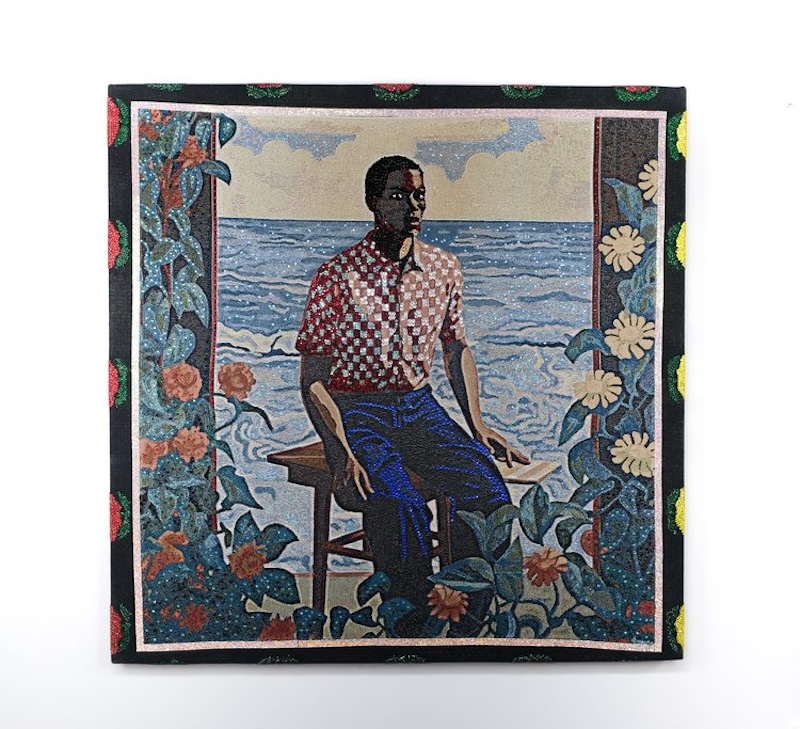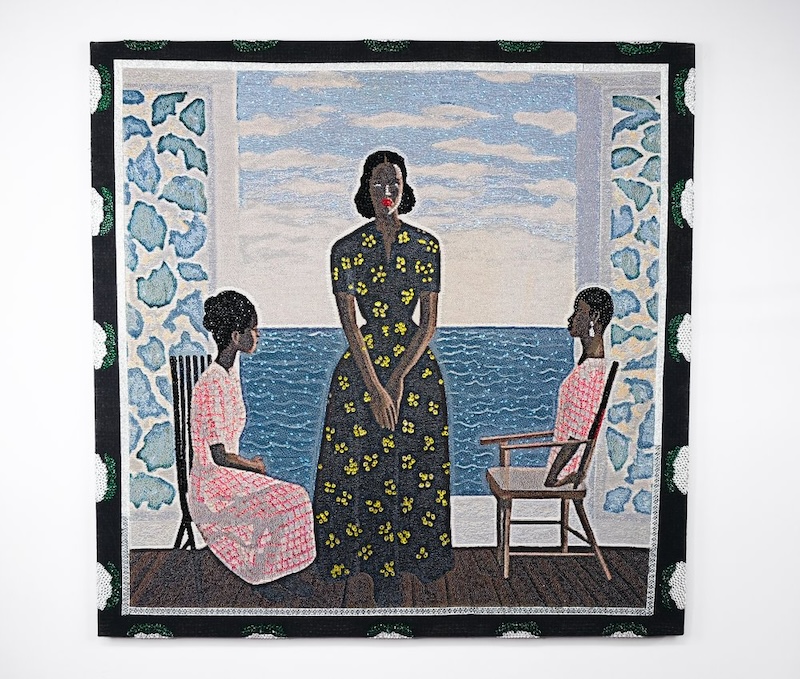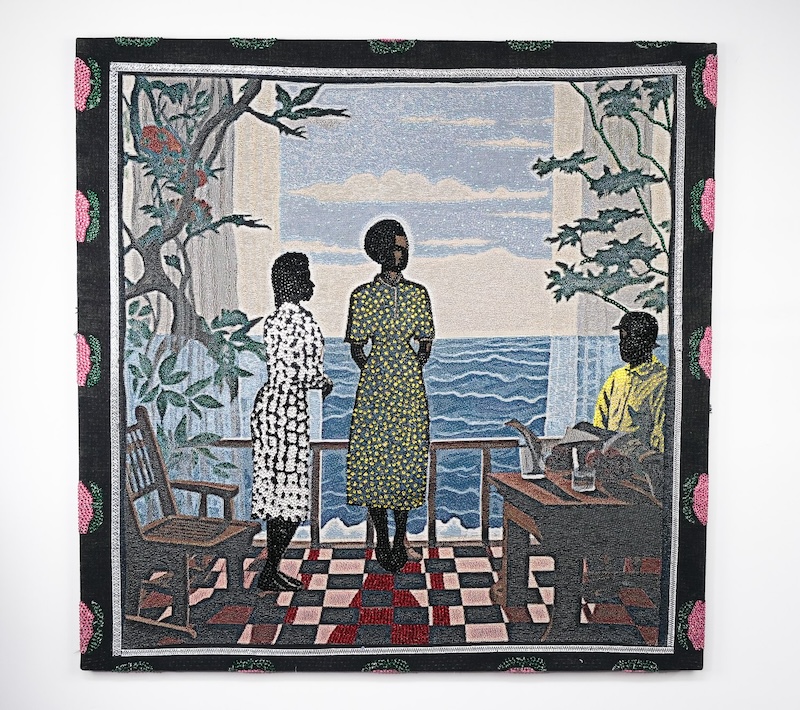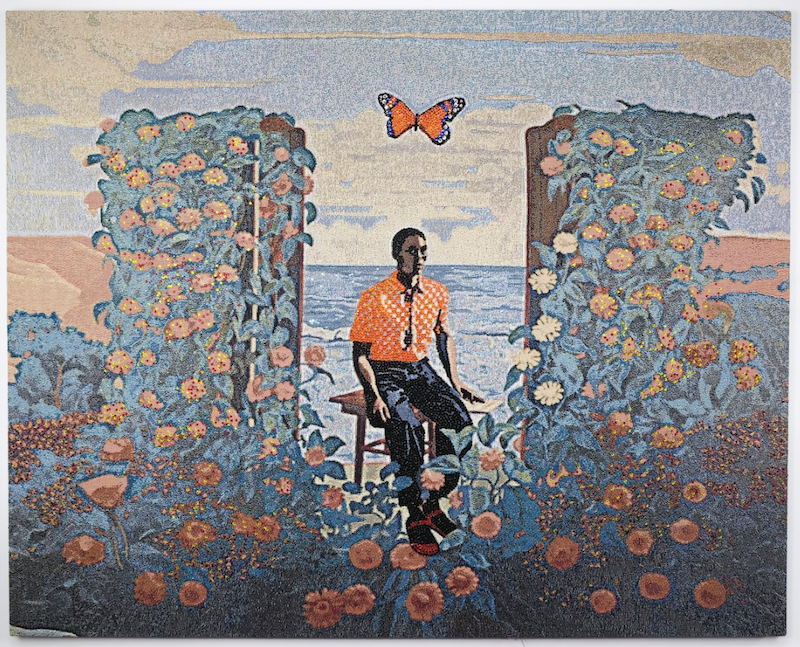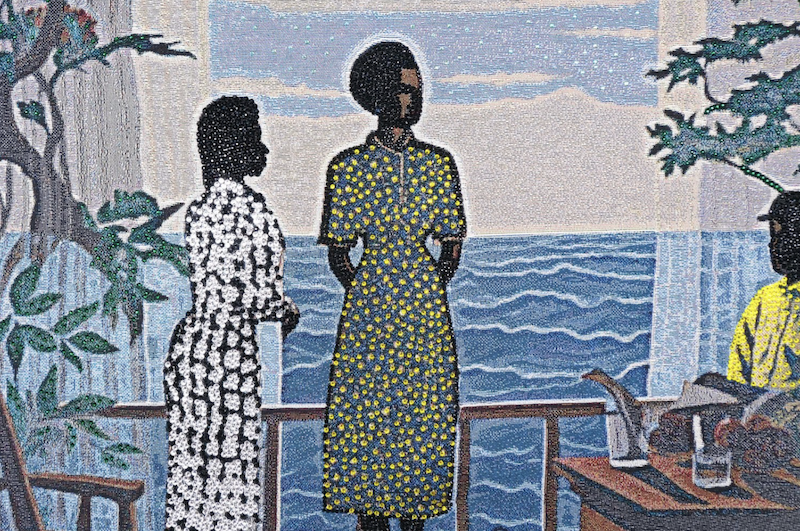After a recent standout show with Library Street Collective and showing at Untitled Art Fair in Miami, we are excited to see Akea Brionne's new solo show, Roses Grow in Southern Soil, opening at Lyles & King, NYC this weekend. Her first solo presentation with the gallery and in New York, Roses Grow in Southern Soil invites audiences to delve into a world in which intergenerational memory, movement, Afro-surrealism, and emotion converge into a dense visual tapestry.
Incorporating masterfully woven colorful threads as canvas under a rich mosaic of rhinestones, Brionne’s new body of work continues her investigation into her grandfather’s journey between Mississippi and New Mexico in the 1970s at the tail end of The Great Migration. A combination of portraiture, abstraction, and still-life, her images are constructed through feeding an AI software transcripts her of dreams, descriptions of family pictures, accounts of visited landscapes, and imagined spaces. “My skepticism around the digital has largely been rooted in my distrust for it.” says Brionne, “but much of my life and the traumas I've encountered are rooted in distrust.
Brionne’s realistic depictions of everyday scenes highlight the strangeness of familiar surroundings. Akin to Edward Hopper’s iconic paintings of urban interiors, her anonymous figures and empty landscapes within snapshot-like compositions create an undeniable sense of loneliness. Distorting reality for an emotional impact, Oh Dear, presents three females: one standing in the center with two similarly dressed women in profile on chairs looking at her, in front of a window overlooking a deep calm ocean. Upon closer inspection, it becomes clear that one of the seated figures is only a torso without a pelvis or legs. This break of perception gives the canvas a dangerous, mysterious aura, forcing it out of the realm of reality.
A cast of characters, a consistent color palette, and various environmental motifs such as deserts and bodies of water make repetitive appearances in Brionne’s work, punctuating the exhibition and allowing a narrative to emerge. Investigating the intersection between the South and Southwest aesthetics, most of her images are framed with a thick border of Magnolias - Mississippi’s state flower - and fig flowers, wrapping around the sides. In four exhibited works, the floral border migrates to fill smaller canvases. Inspired by central African tapestries and ornamental pottery from New Mexico, those floral works evoke familial traditions.
The floral frame of Home Grown, one of the largest-most works of the exhibition, abandons its purpose and finds a new home closely wrapped around the main figure. Sitting on a mahogany stool that resembles a mid century modern coffee table, the man at the center of the canvas is held within an orange desert, his stool floating on an ocean’s shore. This precise narrative continues in Always With You when two female figures appear attending to him. In this instance, the once erect floral arrangement appears to collapse under their feet risking the waves sweeping them away. Brionne’s work proposes that beyond our visible, tactile world sits an invisible world striving to manifest.
Akea Brionne belongs to a category of artists whose work appears existential but does not make us feel in crisis. Perhaps because they allow us, the viewers, to see an echo of our own dwellings, contemplations, and experiences and thereby to feel less personally prosecuted or overtaken by them.



